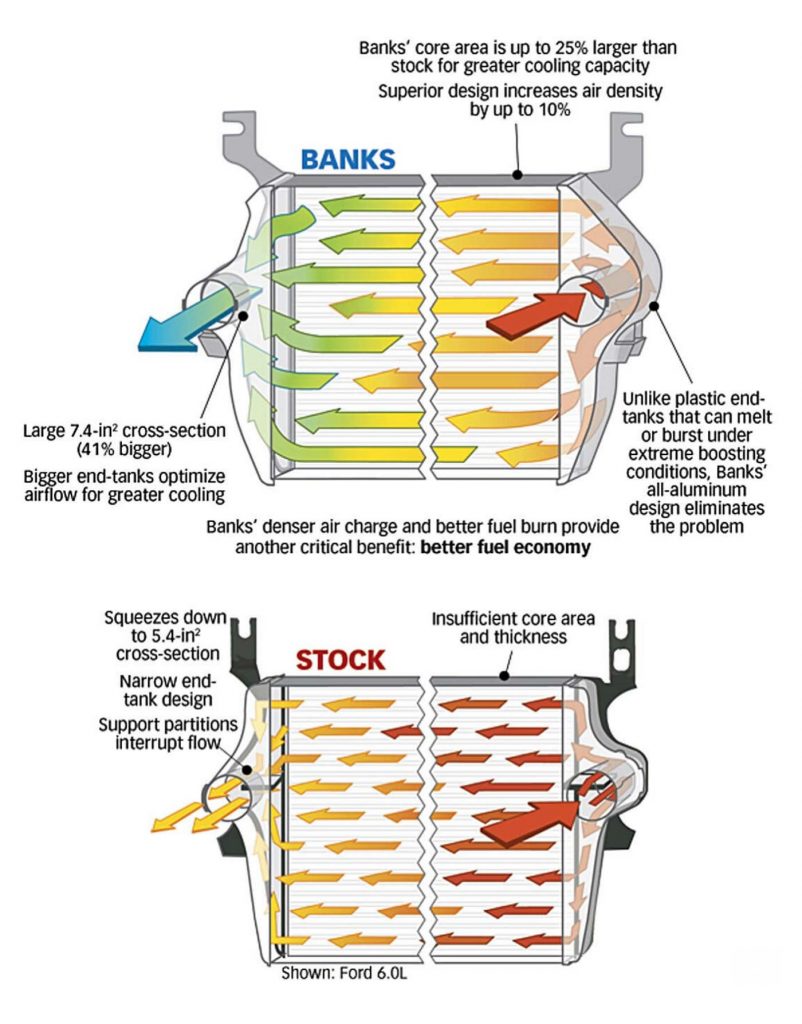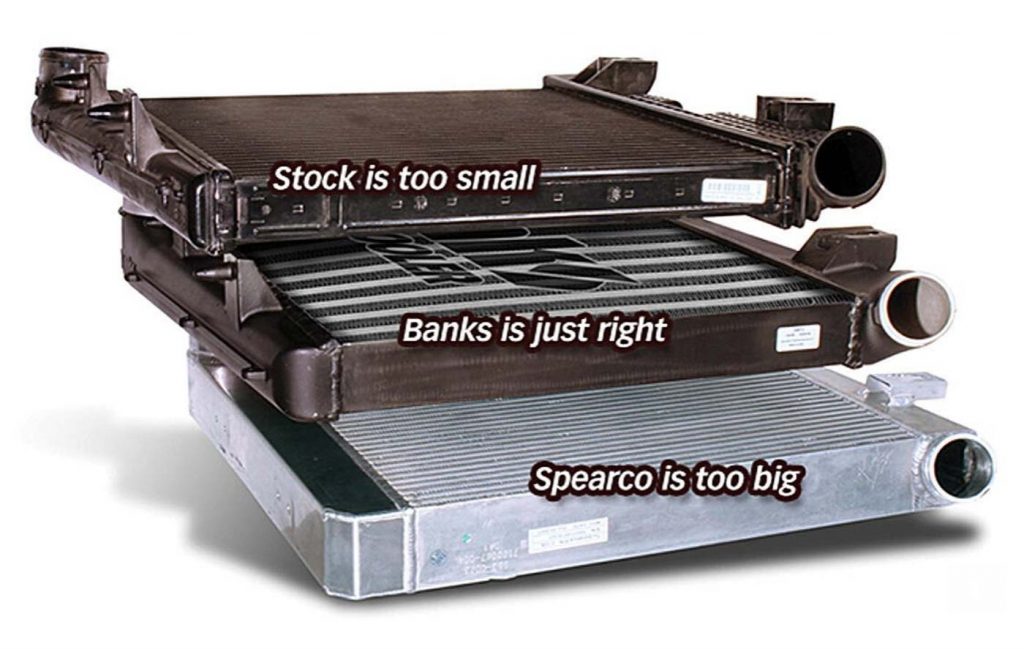Air Density Done Right
Making the best intercoolers takes more than just big cores. Devising the perfect intercooler is more than just making a thicker cooler brick and fashioning inlet and outlet pipes that fit. An intercooler is like a radiator for air, simply put, and made up of stacked tubes that the pressurized (“boosted”) air flows from one side to the other of the unit. Inside those tubes are fins that the air must travel through/around and are packed in various angles and numbers.
The amount of cooling not only depends on the fin count and design of those fins packed into those tubes but the flow or amount of restriction also depends on that arrangement. Think of the fins as strainers for heat. Pack the tubes too densely and you’ll get better cooling but the amount of restriction will increase, dropping pressure and reaction times. Pack the tubes too sparsely and the flow will increase but its ability to cool the air will diminish. It’s a balancing act.
Some aftermarket manufacturers make intercoolers with just an extruded tube which gets the air through the core very quickly but defeats the purpose altogether because there is nothing to actually cool the boosted air.

An intercooler’s ability to chill the air also depends on the space between the tubes, which is also packet with fins. These fins are cooled by the incoming air from the nose of the vehicle and effectively pull the heat from the tubes and assist with chilling the boosted air. The effectiveness of the cooling ability also depends on the fin count and design here as well. Have a bunch in-between the tubes and you have more surface area to act as a heat sync, but then your flow through the face of the core is dismal. Remember, you have a succession of coolers behind that intercooler including a radiator, transmission cooler, and others. Make the intercooler too efficient and it ends up being selfish, starving the rest of the cooler pack that needs air, causing those systems to overheat. Reduce the fin count, and the ability to cool is less, but at least the rest of the systems get air. This is the reason for the instrumentation on the test vehicle and the extreme amount of testing done here at Banks.

Making a performance intercooler is an interesting teeter-totter. We actually take into account everything when making an intercooler upgrade, and all that engineering makes for a winning product. When someone says that their intercooler outflows ours, we know it has to give up performance in another area. It may flow better, but does it cool better? Remember, the function of the unit is to provide better air density which will equal more power, cooler overall temperatures, greater sustained performance, and increased MPG. So, the question here is what is the actual air density gain that the intercooler affords, not just how it flows or that it’s simply bigger. Some companies just don’t understand these facts and will continue to make claims. At Banks, we deal in data, and you can’t dispute the facts.

